Peppermint essential oil, Mentha piperita*, is steam distilled from the plant’s leaves. Peppermint belongs to the Lamiaceae (Labiatae) botanical family.
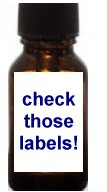 * Be sure you check the label for the botanical name. If it does not say Mentha piperita then it is not Peppermint.
* Be sure you check the label for the botanical name. If it does not say Mentha piperita then it is not Peppermint.
Some vendors sell Cornmint (Mentha arvensis) under the name Peppermint.
Cornmint is a less expensive oil and does not have the same profile as Peppermint. So check those labels! ![]()
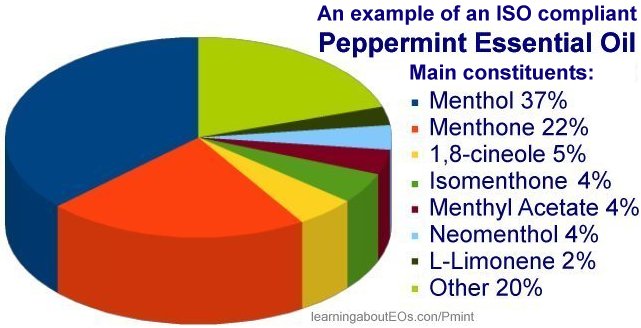
Main chemical families: Monoterpenols (40%), Ketones (30%)

Dilution Guidelines
Essential oils are concentrated substances and must be diluted before using. The general rule of thumb for diluting essential oils is 2% dilution for adults (2 drops essential oil per 1 tsp carrier) and 1% dilution for children (1 drop essential oil per 1 tsp carrier). For more information read: Properly Diluting Essential Oils.
Peppermint essential oil has a maximum topical dilution of 5.4% due to menthofuran and pulegone content and their potential for hepatoxicity. Source: Essential Oil Safety by Robert Tisserand.
Therapeutic Properties of Peppermint Essential Oil |
|||
|---|---|---|---|
| Therapeutic Property | Definition | Health Concern | Body System |
| analgesic | relieves pain | headache | nervous |
| sore throat | digestive | ||
| toothache | skeletal | ||
| anti-inflammatory | relieves inflammation | ache | muscular |
| IBS | digestive | ||
| antibacterial | inhibits bacterial growth | bacteria | skin |
| antiemetic | relieves nausea, vomiting | nausea | digestive |
| vomiting | digestive | ||
| antihalitosis | freshens breath | bad breath | digestive |
| antifungal | inhibits fungal growth | fungus | skin |
| antimicrobial | inhibits microbial growth | bacteria, fungus, virus | skin |
| antioxidant | inhibits oxidation | free radical damage | skin |
| antipruritic | relives itching | itching | skin |
| antispasmodic | relieves cramp, spasm | cramp | muscular |
| spasm | muscular | ||
| antiviral | combats viruses | virus | lymphatic |
| astringent | constricts skin | wrinkles | skin |
| carminative | relieves digestive bloating | intragastric pressure (bloating) | digestive |
| cephalic | relating to the head | mental fatigue | nervous |
| choleretic | stimulates bile production | low bile production | digestive |
| circulatory stimulant | stimulates circulation | poor circulation | cardiovascular |
| cooling | |||
| decongestant | relieves congestion | congestion | respiratory |
| emmenagogue | stimulates menstruation | low menstrual flow | reproductive |
| expectorant | promotes drainage of respiratory congestion | cough | respiratory |
| febrifuge | reduces fever | fever | lymphatic |
| immunostimulant | stimulates immune system | low immune system function | lymphatic |
| lipophilic | skin penetration enhancer | skin | |
| nervine | nerve tonic | nerves | nervous |
| stress | endocrine | ||
| stomachic | stimulates digestion | dyspepsia (indigestion) | digestive |
| poor appetite | digestive | ||
| sudorific | promotes perspiration | skin | |
| vermifuge | destroys and expels intestinal worms | intestinal worms | digestive |
Scientific Research Citations
Peppermint oil is effective in relieving abdominal pain for those suffering with IBS. Source: PubMed.
The menthol in Peppermint oil was found to have antifungal properties. Source: PebMed.
Peppermint oil has antimicrobial properties. Source: PubMed.
Peppermint oil useful antispasmodic for elderly patients. Source: PubMed.
Peppermint oil has antiviral properties that can be suitable against recurrent herpes infection. Source: PubMed.
Peppermint oil relaxes smooth muscles and can provide relief of colonic spasm when given via enema. Source: PubMed.
Peppermint oil and caraway found to have favorable results for dyspepsia (indigestion). Source: PubMed.
Topical application of Peppermint oil can relieve pruritus (itching), irritation, and inflammation. Also can be a skin sensitizer. Source: PubMed.
Peppermint oil diluted to 10% as effective as 1,000 mg acetaminophen for headaches. Source: PubMed.
Peppermint oil may be helpful for treating tension headache. Source: PubMed.
Peppermint oil can be used short-term to treat IBS. Source: PubMed.
Enteric-coated Peppermint oil may relieve IBS symptoms. Source: PubMed.
Peppermint oil reduces intragastric pressure (bloating). Source: PubMed.
Peppermint oil can help with low bile production, as it stimulates bile fluid secretion. Source: PubMed.
Peppermint oil may reduce the perceived level of mental fatigue. Soruce: PubMed.
Suggestions for Using Peppermint Essential Oil for Health Concerns
- Please note our disclaimer (in blue box at bottom of post) before using any of the information provided in the images below.
- Dilution Note: For some of the suggestions below you can increase dilution up to 5% (per max. dilution guideline for this EO) if needed. See our dilution chart here: Properly Diluting Essential Oils to calculate desired dilution and adjust amount of product you are making. Always use the lowest dilution that provides results.
- Carrier suggestions: coconut oil, and for pain-relieving blends I personally use arnica lotion, or arnica massage oil. Read more about carriers here: What Carriers to Use.
- For diffuser suggestions, I personally have and love the SpaVapor.

|
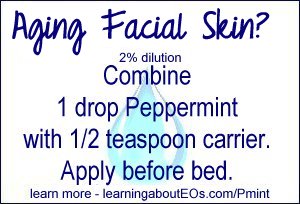
|
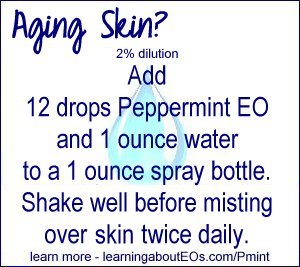
|

|
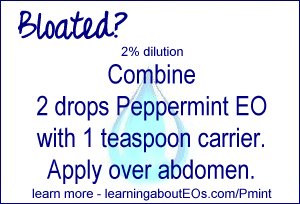
|
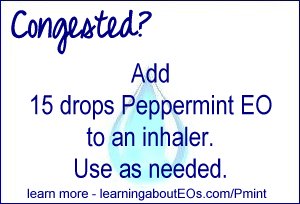
|
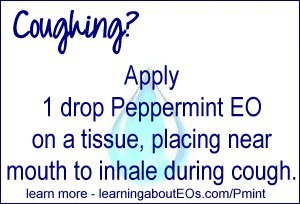
|
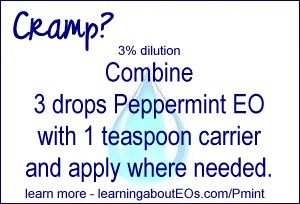
|

|
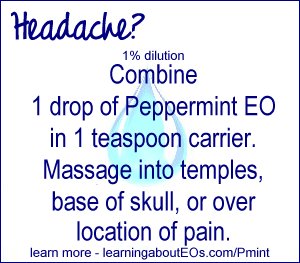
|
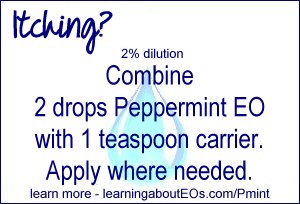
|
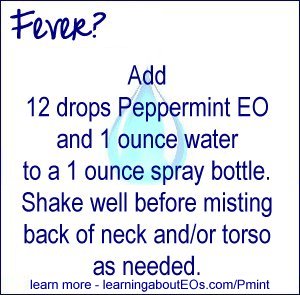
|
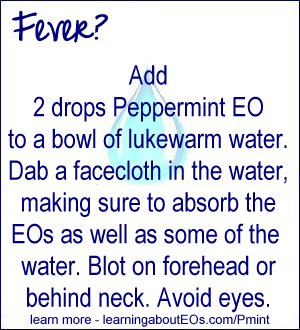
|

|
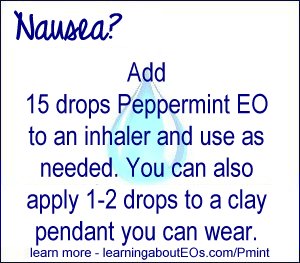
|
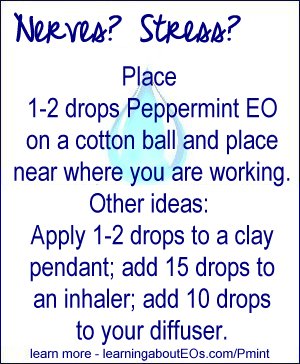
|
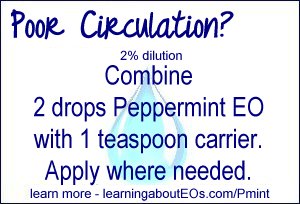
|
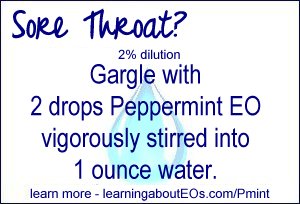
|
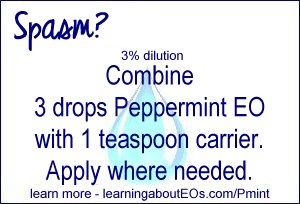
|

|
Dietary Uses
Used as a food flavoring. Replace 1 teaspoon peppermint extract with 1 drop Peppermint essential oil in recipes.
Personal Care Uses
Can be used in soap, toothpaste and mouthwash recipes.
Pregnancy & Breastfeeding Notes
Peppermint essential oil may decrease lactation. Use with caution if breastfeeding.
Interesting Facts
Peppermint essential oil takes 100-120 minutes to be absorbed through the skin. Source: The Illustrated Encyclopedia of Essential Oils.
It takes 1,000 pounds of mature plants to create 1 pound of Peppermint essential oil. Source: A Complete Guide to Understanding and Using Aromatherapy for Vibrant Health and Beauty.
Our 3rd Party Testing of Peppermint Essential Oils
We tested 13 essential oils from 12 companies and found 10 samples to be “Not in Compliance” with ISO standards. Two of the 10 also contained a synthetic additive, ethyl vanillin.
Read more: 3rd Party Test Results for Peppermint Essential Oil.
 Click here to download a PDF version of this post.
Click here to download a PDF version of this post.
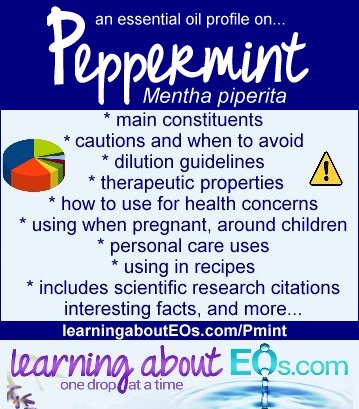
| Lea Harris is a Certified Aromatherapist with Advanced Graduate training from Aromahead Institute in July 2013, but she is not a doctor. Please consult a trained aromatherapist or your doctor before using any of the suggestions on this website, as the user's age and health conditions must be taken into account before using. The information contained in this website is for informational purposes only, and should not be used as a substitute for professional medical advice. |
Comments
Powered by Facebook Comments


Pingback: Essential Oils and MLMs | The Common Room